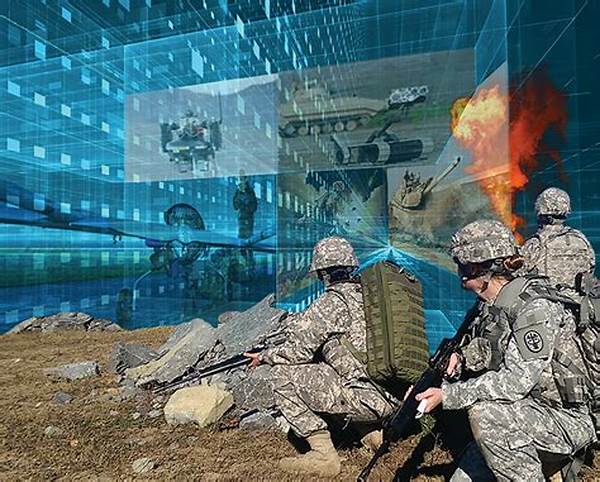The rapid evolution of technology in the defense sector has ushered in an era where autonomous combat systems are becoming increasingly prevalent. These systems, characterized by their ability to engage in combat without direct human intervention, are transforming military operations worldwide. However, as the reliance on these sophisticated systems grows, so does the need to ensure their security against cyber threats. Cybersecurity in autonomous combat systems is thus of utmost importance, as the potential for cyber-attacks on these platforms presents a significant risk to national security.
The Importance of Cybersecurity in Autonomous Combat Systems
In the landscape of modern warfare, autonomous combat systems serve as force multipliers, enhancing the efficacy and reach of military operations. These systems are equipped with advanced sensors, artificial intelligence, and communication networks, which allow them to operate seamlessly. Nonetheless, the integration of these technologies also exposes them to vulnerabilities in the form of cyber threats. Cybersecurity in autonomous combat systems is crucial to prevent unauthorized access and manipulation by adversaries who seek to exploit these vulnerabilities. A breach in these systems could potentially lead to catastrophic outcomes, such as loss of control, misuse, and unintended escalation of conflicts. Therefore, robust cybersecurity measures are required to safeguard these critical assets and ensure their reliability and effectiveness in combat scenarios.
In ensuring cybersecurity in autonomous combat systems, it is essential to implement a multi-layered security approach. This includes secure coding practices, encryption protocols, and regular vulnerability assessments. Additionally, establishing a comprehensive incident response plan is necessary to mitigate the impact of any cyber intrusion. Collaboration between military cyber units, technology developers, and governmental agencies is pivotal in developing and maintaining resilient security frameworks. By prioritizing cybersecurity in autonomous combat systems, armies can mitigate risks and enhance their operational readiness, ultimately preserving national security and achieving strategic objectives.
Challenges in Cybersecurity for Autonomous Combat Systems
1. Autonomous combat systems are inherently complex, integrating diverse technologies. This complexity poses significant challenges in implementing cybersecurity effectively, requiring multifaceted security solutions.
2. Adversaries constantly evolve their cyber tactics, necessitating continuous updates and advancements in cybersecurity measures within autonomous combat systems to stay ahead of potential threats.
3. Ensuring cybersecurity in autonomous combat systems is further complicated by the necessity for interoperability with existing military infrastructure, requiring seamless integration without compromising security.
4. The lack of standardization in cybersecurity protocols for autonomous combat systems can lead to inconsistencies and vulnerabilities, emphasizing the need for industry-wide guidelines and best practices.
5. Cybersecurity in autonomous combat systems also involves addressing ethical and legal considerations, balancing security measures with privacy and human rights concerns.
Technological Innovations and Cybersecurity in Autonomous Combat Systems
The development of new technologies is both a boon and a challenge for cybersecurity in autonomous combat systems. On one hand, advancements in artificial intelligence, machine learning, and quantum computing provide enhanced capabilities and efficiencies. These technologies can be leveraged to strengthen cybersecurity measures, enabling real-time threat detection and response, as well as predictive analytics to anticipate potential threats. Furthermore, blockchain technology offers promising solutions for secure communications and data integrity within these systems.
Conversely, the same technological advancements can also be exploited by adversaries. Autonomous combat systems heavily rely on networks and software that can become targets of sophisticated cyber-attacks. As such, incorporating security features at every stage of technology development is crucial. Research and development efforts must prioritize cybersecurity in autonomous combat systems to prevent sabotage and ensure the longevity and reliability of these systems in military operations.
Strategic Approaches to Cybersecurity in Autonomous Combat Systems
A strategic approach to cybersecurity in autonomous combat systems requires a comprehensive framework that addresses various aspects of security. This involves threat assessment to identify potential vulnerabilities and risks, enabling the development of targeted countermeasures. Furthermore, fostering a culture of cybersecurity awareness and education among personnel is vital. Regular training can help individuals recognize and respond to potential cyber threats promptly.
1. Developing international collaborations to share intelligence on cyber threats.
2. Investing in research to explore cutting-edge cybersecurity technologies.
3. Implementing stringent access controls to prevent unauthorized entry.
4. Conducting frequent audits and penetration testing to uncover vulnerabilities.
5. Ensuring software updates and patches are applied promptly.
6. Utilizing simulation exercises to prepare for potential cyber incidents.
7. Emphasizing the importance of robust encryption mechanisms for data protection.
8. Encouraging public-private partnerships to harness industry expertise.
9. Fostering an environment of continuous learning and adaptation.
10. Establishing clear protocols for reporting and addressing security breaches.
Policy and Regulation of Cybersecurity in Autonomous Combat Systems
As autonomous combat systems become more prominent, establishing comprehensive policy and regulation frameworks becomes imperative. Policymakers must recognize the significance of cybersecurity in these systems as a component of national defense strategies. Robust legal and regulatory frameworks can guide the development and deployment of secure autonomous combat systems, ensuring compliance with international standards. These regulations should also address ethical concerns surrounding the use of autonomous systems in military operations, promoting accountability and transparency.
Strong regulatory frameworks foster innovation by providing clear guidelines on cybersecurity requirements for developers and manufacturers. By setting consistent security benchmarks, these policies ensure that all autonomous combat systems undergo rigorous testing and evaluation before deployment. Moreover, international cooperation in drafting and enforcing cybersecurity regulations can mitigate risks posed by cross-border cyber threats. Effective policy and regulation promote the responsible use of autonomous combat systems while enhancing their resilience to cyber warfare.
Future Prospects in Cybersecurity for Autonomous Combat Systems
The future of cybersecurity in autonomous combat systems hinges on sustained innovation and adaptability to emerging threats. As adversaries become more sophisticated, staying ahead of the curve necessitates ongoing research and development in cybersecurity solutions. Investing in cutting-edge technologies such as artificial intelligence and machine learning for threat detection and response is crucial. These technologies can bolster the systems’ ability to operate autonomously while maintaining robust defenses against cyber-attacks.
Additionally, fostering international cooperation and information-sharing among allies is vital to address the global nature of cyber threats. Creating a dynamic and agile cybersecurity infrastructure will enhance the resilience of autonomous combat systems and ensure their reliability in volatile environments. Ultimately, by prioritizing cybersecurity in autonomous combat systems, military organizations can achieve a strategic advantage, safeguarding national security interests and maintaining the integrity of autonomous operations.





